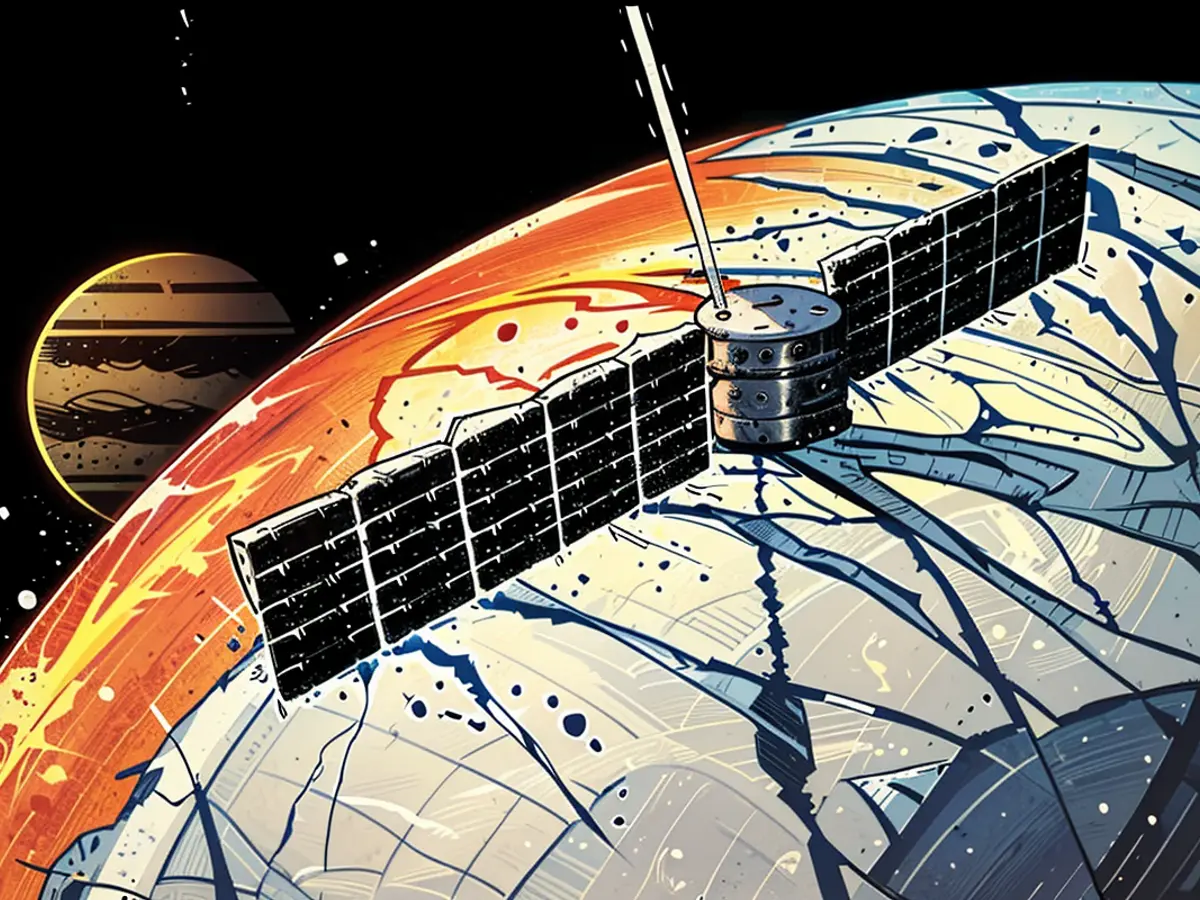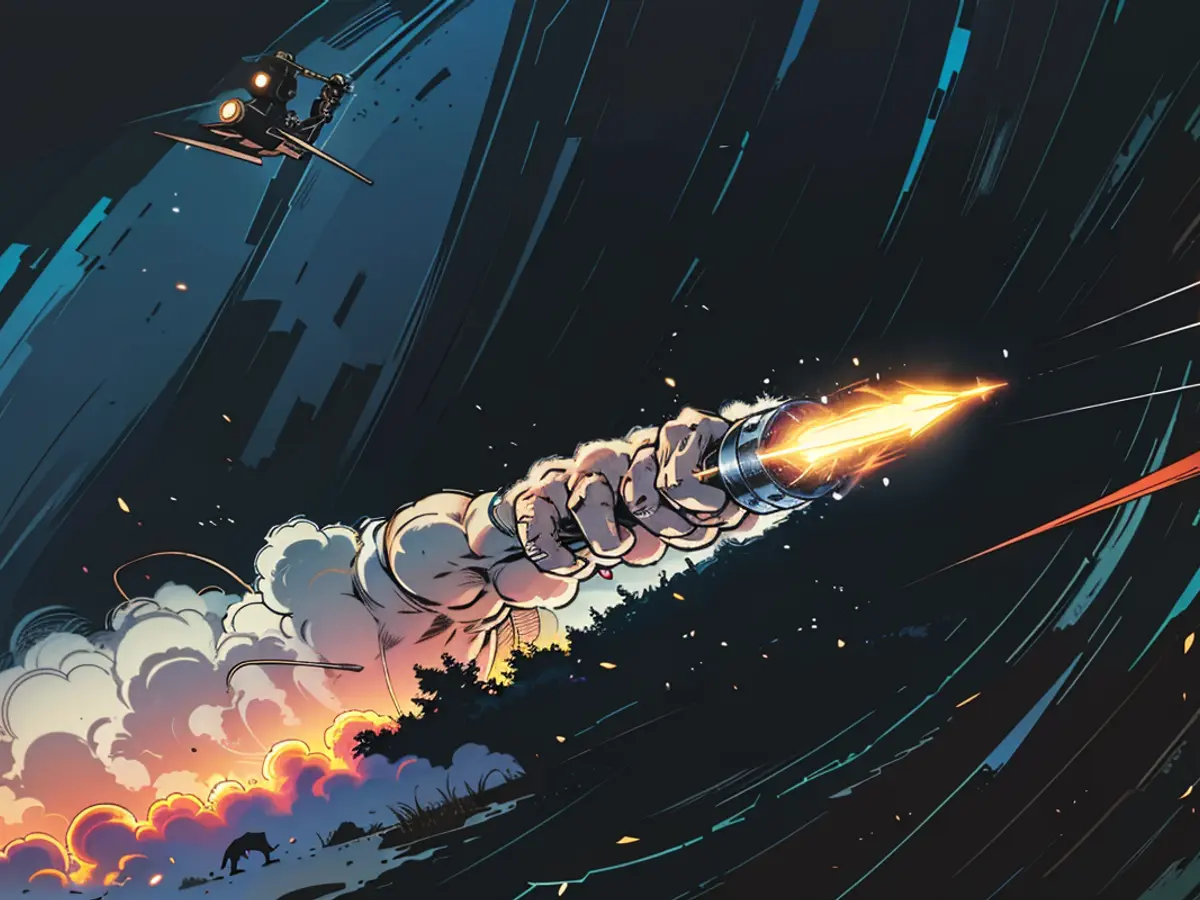American spacecraft titled Europa Clipper commences journey towards Jupiter's orbiting satellites.
Is there a potential other heavenly body in our solar system, apart from Earth, that might support life? Currently, on this very Monday, an American spacecraft named Europa Clipper embarked on its journey from Cape Canaveral, Florida, with NASA leading the charge. Its ultimate goal: exploring Jupiter's moon Europa, which it is anticipated to reach in April 2030.
Set in motion around noon (local time), it soared skyward with a Falcon rocket from SpaceX, the private space company. NASA's primary objective is to delve deeper into Europa, just one of Jupiter's numerous moons. Scientists suspect that under its icy mantle lies an ocean of liquid water.
"Europa is one of the most compelling destinations to hunt for life beyond our planet," said NASA representative Gina DiBraccio at a press conference last month. "It's not about investigating a world that could have been inhabitable billions of years ago, like Mars, but a world that could potentially be habitable right now," added Curt Niebur, a scientist involved with the Europa Clipper project.
To date, NASA has never designed a probe of such magnitude for interstellar exploration. Over the past decade, approximately 4,000 individuals have contributed their expertise to this $5.2 billion (€4.7 billion) mission. If Europa's environment aligns with factors conducive to life, a future expedition will be orchestrated to scrutinize the possibility of life existing there.
Target: Water, Energy, and Chemical Elements
Europa Clipper boasts a 30-meter wingspan when its extensive solar panels are fully extended, intended for capturing the faint light emanating from Jupiter. Packed with cameras, radar, a spectrometer, and a magnetometer, among other instruments, it will analyze Europa's icy surface layout and the ocean beneath. It will also gather information on the depth and salt content of the ocean.
Additionally, it will examine the interplay between Jupiter and its moon, allowing scientists to ascertain if water reaches the surface in certain locations. This will help determine if the three vital elements for life are present: water, energy, and some chemical compounds.
If these conditions are indeed met on Europa, rudimentary microbe-like life might exist in its ocean, hinted by NASA scientist Bonnie Buratti. However, these microbes would likely be situated too deeply to be detectable by Europa Clipper.
Set for a 2.9 billion-kilometer trek to Jupiter, it is anticipated to reach Europa in April 2030. The primary mission will span another four years thereafter. Europa Clipper will encounter Jupiter's moon a total of 49 times, getting as close as 25 kilometers. During these encounters, it will face intense radioactive radiation.
In the meantime, the European Space Agency (ESA) launched its counterpart probe, JUICE, towards Jupiter in April. JUICE's journey to the planet's vicinity will take a total of eight years. Similar to Europa Clipper, JUICE will also focus on Jupiter's icy moons and seek evidence of extraterrestrial life.
The Europa Clipper, with its extensive solar panels and advanced instruments like cameras, radar, and a spectrometer, is aimed at analyzing Europas icy surface and the ocean beneath, as well as examining the depth and salt content of the ocean. This mission, led by NASA, is targeting water, energy, and chemical elements in Europa to determine if they meet the conditions conducive to life.
As the Europa Clipper soars towards Jupiter, its 30-meter wingspan is designed to capture the faint light emanating from the gas giant, allowing it to study the interplay between Jupiter and Europas icy moon and potentially discover if the three vital elements for life are present.








